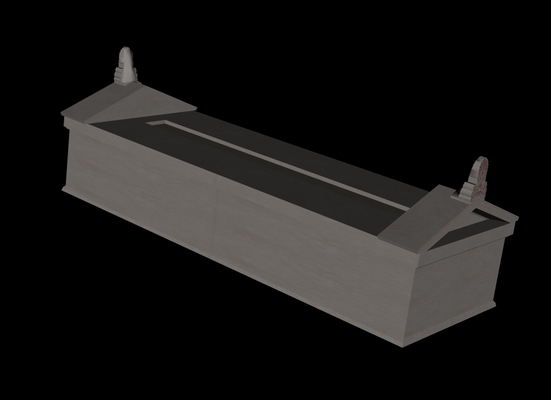There were no issues with the representation of the Altar of Aphrodite Ourania, for more than 50% of its superstructure still survives in its place, that is in the southern half of the altar, while the representation by the previous architect of the Agora, W.B.Jr Dinsmoor, proved particularly helpful [see Mc Camp, II, J., Η Αρχαία Αγορά της Αθήνας. Οι Ανασκαφές στην καρδιά της κλασικής πόλης2 (Αθήνα 2004), p. 77, fig. 38].
There is only one building phase after the repairs on the upper part, in the 430s BC (which, however, did not alter the original design, but simply led to the raising of the level of the surrounding area), as the altar remained unaltered until the Roman period. The pedimental crowning and its decoration with acroteria and anthemia was digitally reconstructed on the basis of the krateutai uncovered by the excavators in the altar, although these were discovered 26m away. For the pictorial decoration we followed the excavators’ suggestions, according to which the some of the decoration was still preserved on the krateutai when these were first unearthed [Shear, T.L., ‘The Athenian Agora: Excavations of 1980-1982’,
Hesperia 53 (1984), pp. 1-19].
 Altar of Aphrodite Ourania, 3D representation
Altar of Aphrodite Ourania, 3D representation
